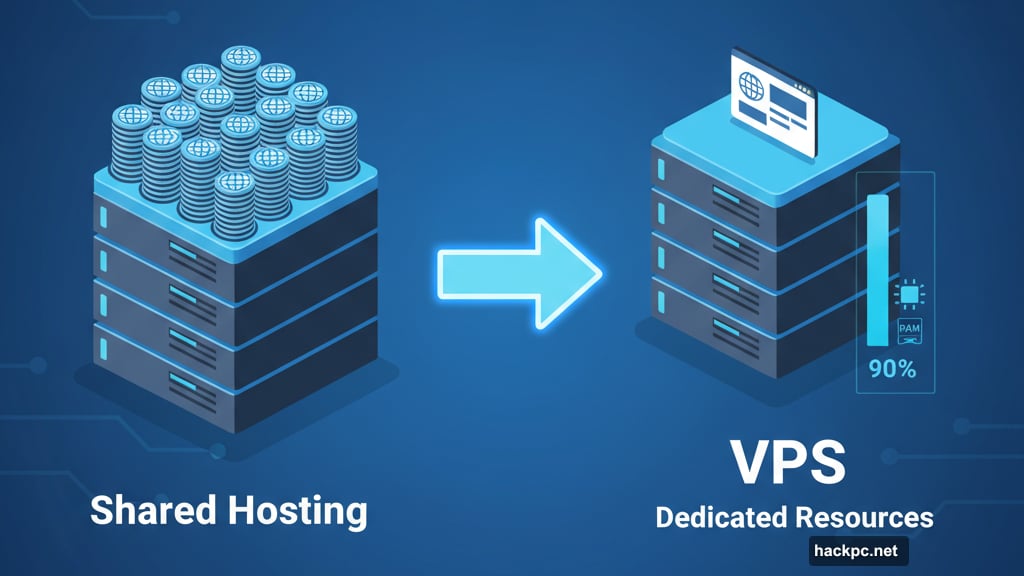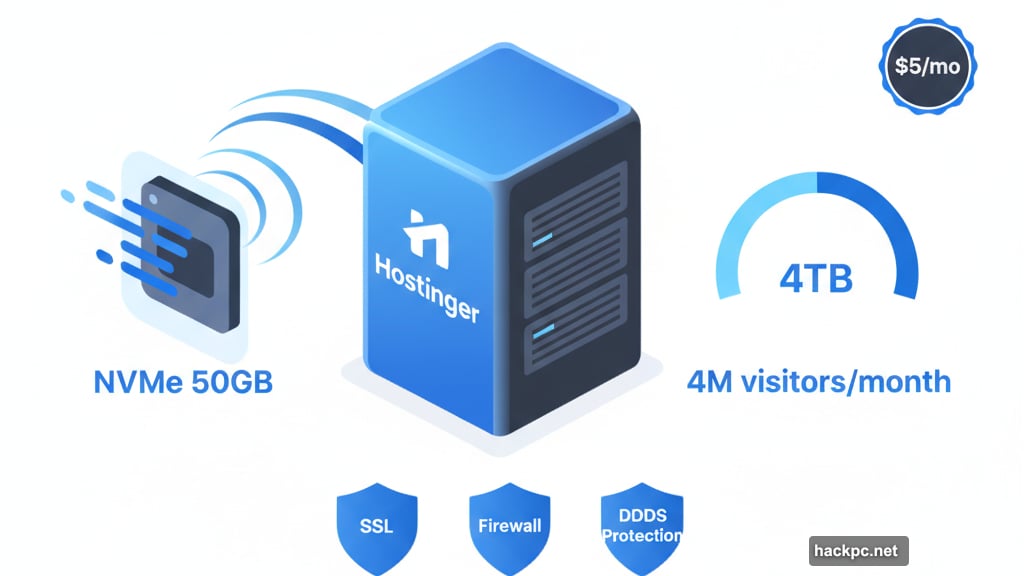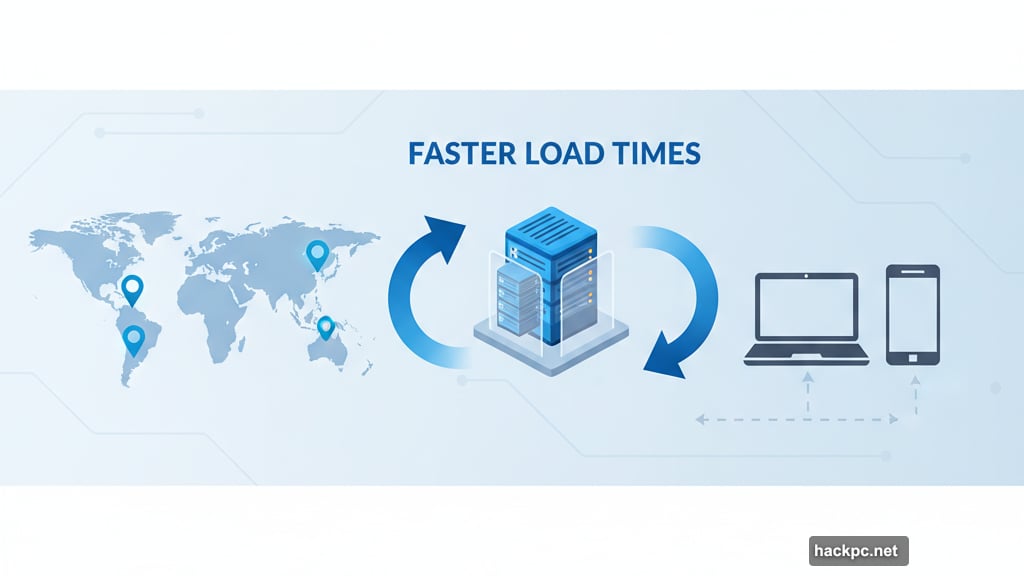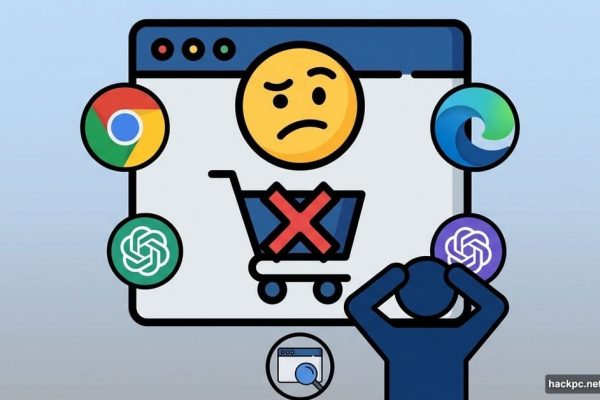
Your website needs more power. Shared hosting isn’t cutting it anymore.
Virtual private server hosting gives you dedicated resources without the massive cost of a full dedicated server. Plus, you get better security and control. But navigating dozens of VPS providers with confusing specs and pricing? That’s where most site owners get stuck.
I spent the past year testing VPS hosting companies to find which ones actually deliver on their promises. Here’s what really matters when you’re choosing VPS hosting.
Managed vs. Unmanaged: The Choice That Changes Everything
Before you compare features and prices, understand this fundamental split.
Managed VPS hosting costs more upfront. However, the hosting company handles all server software. They install security updates, maintain the operating system, and fix technical issues. You focus on your website content instead of server configuration.
Unmanaged VPS hosting looks cheaper at first. But here’s the catch. You configure everything yourself. Or you hire a system administrator to do it. That can cost more than managed hosting in the long run.
Most website owners should choose managed VPS. The technical complexity of unmanaged hosting isn’t worth the headache unless you need deep server customization.
Hostinger Dominates Unmanaged VPS
Hostinger crushes the competition for unmanaged virtual private servers.
Their plans start at just $5 monthly. That price requires a two-year contract. Still, renewal pricing only rises to $9 monthly. Compare that to competitors charging double or triple after the introductory period.
The basic Hostinger VPS plan includes 50GB storage. That’s enough for 500 pages minimum. You also get 4TB bandwidth, supporting four million monthly visitors. Plus, Hostinger uses NVMe storage instead of standard SSDs. Your site loads faster as a result.
Security? Covered. SSL certification, firewall protection, and DDoS defense come standard. Hostinger also lets you choose data center locations near your target audience. So if your visitors live in the US, pick a US data center for faster load times.
The downside? Customer support lacks phone and email options. Live chat only. Also, you handle all server software yourself. That’s the unmanaged hosting trade-off.
Hosting.com Wins for Beginners

Managed VPS from Hosting.com (formerly A2 Hosting) provides the smoothest entry point.
Their lowest-tier managed plan costs $38 for the first month. Future months jump to $76. That’s expensive. But you get comprehensive WordPress tools, guided installation, and full server management. Hosting.com handles security updates, operating system maintenance, and technical configuration.
Storage starts at 150GB, enough for 1,500 pages. Bandwidth provides capacity for two million monthly visitors. You also get LiteSpeed-enhanced servers for reliable performance. Plus, the full security suite includes firewall protection, DDoS defense, virus scanning, and 24/7 monitoring.
What makes Hosting.com beginner-friendly? Their site assistant walks you through WordPress installation step by step. Most managed hosts just give you a dashboard and say “good luck.” Hosting.com actually guides you.
Hosting.com also offers unmanaged VPS starting at $10 monthly (renews at $20). However, you’ll configure all security yourself. That makes it less attractive than cheaper unmanaged options like Hostinger.
Ionos Serves Expert Users Best
Ionos builds VPS hosting for people who understand server specs intimately.
They offer dozens of different plan configurations. Some provide minimal storage but unlimited bandwidth. Others prioritize processing power over disk space. This flexibility lets experts match plans precisely to their needs.
Pricing starts at an absurdly low $2 monthly. However, that base plan includes just 10GB storage. Enough for 100 pages maximum. Still, you get unlimited bandwidth and one vCPU core.
The variety becomes overwhelming if you’re not technical. But for experts? It’s perfect. You select exactly what your application requires without paying for unused resources.
Ionos also provides excellent customer support. Live chat and phone support available 24/7. During testing, response times never exceeded a few minutes. Compare that to providers where you wait 30+ minutes for basic questions.
Security includes SSL certification, firewall protection, and DDoS defense. However, backups cost extra. Factor that into your budget.
GreenGeeks Cuts Your Carbon Footprint
GreenGeeks purchases three times their energy usage in wind credits.
They also plant one tree for every hosting plan purchased. So if environmental impact matters to you, GreenGeeks stands out.
All GreenGeeks VPS plans come managed. That means full server support. Plans start at $70 monthly, which looks expensive. But you get 75GB storage (750 pages minimum) and 10TB bandwidth (ten million monthly visitors). Plus four vCPU cores and 4GB RAM provide strong baseline performance.
Security includes SSL, firewall protection, DDoS defense, and 24/7 monitoring. You also get unlimited email hosting. So every team member can have their own professional email address.
Customer support runs 24/7 via live chat. Phone support operates 9am to midnight ET daily. Not quite round-the-clock phone access. But better than nothing.
The main reason to choose GreenGeeks? You want VPS hosting without the environmental guilt.
HostPapa Brings Built-In Security
HostPapa VPS plans include comprehensive security by default.
Both managed and unmanaged plans feature firewall protection, SSL certification, DDoS defense, brute force detection, and 24/7 network monitoring. That’s more security than most competitors bundle into their base plans.
Unmanaged VPS from HostPapa starts at $6 monthly (based on three-year contract). You get 60GB storage, enough for 600 pages. Plus 1TB bandwidth supporting one million monthly visitors. Renewal pricing only increases to $10 monthly if you stick with three-year terms.
Managed VPS costs $33 monthly on a three-year contract. Renewals rise to just $37 monthly. That’s significantly cheaper than comparable managed plans from Hosting.com or GreenGeeks.
HostPapa also uses NVMe storage for faster performance. Customer support operates 24/7 through live chat, email, and phone. I’ve used HostPapa for years and consistently get helpful responses within minutes.
The catch? Managed plans hide during initial browsing. You only see them during checkout. So the user experience feels unnecessarily complicated.
Hostwinds Promises Maximum Uptime
Most hosting companies guarantee 99.9% uptime. That means up to 10 minutes of downtime weekly.
Hostwinds guarantees 99.9999% uptime instead. Your site stays online except for maybe two minutes per week maximum due to server issues. That’s impressive.

Hostwinds achieves this through 24/7 server monitoring and enterprise-grade firewall protection. They also include automated nightly backups. So if something breaks, you won’t lose data.
Both managed and unmanaged VPS plans offer these benefits. Unmanaged hosting starts at $5 monthly for 30GB storage (300 pages) and 1TB bandwidth (one million monthly visitors). Managed plans begin at $8.24 monthly with identical resources plus full server management.
Customer service runs 24/7 via live chat, support tickets, and phone. However, renewal pricing remains unclear on their website. That lack of transparency raises questions.
Also, Hostwinds doesn’t include DDoS protection or SSL certification by default. You might need to purchase those separately. Factor those costs into your decision.
Four Key Specs That Actually Matter
When comparing VPS plans, focus on these resources:
vCPU cores determine processing power. More cores mean your server handles complex tasks better. Budget plans typically offer one or two cores. High-end plans provide eight or more.
RAM controls multitasking capability. Sites running multiple apps simultaneously need more RAM. Most entry-level plans include 1-4GB. Advanced plans offer 8GB or higher.
Storage dictates how much data you can store. Calculate roughly: 1GB storage per 10 pages as a baseline. NVMe storage provides faster performance than standard SSDs.
Bandwidth (sometimes called data transfer) limits how much data your server transmits. More monthly visitors require more bandwidth. Calculate roughly: 1TB bandwidth per million visitors.
Most hosts let you upgrade easily. So start with conservative resources. Then scale up when you need more power.
Three Critical Features Beyond Specs
Don’t obsess over specs alone. These factors matter just as much:
Uptime guarantees should meet or exceed 99.9%. Anything less means frequent downtime. Some providers like Hostwinds offer 99.9999% guarantees for maximum reliability.
Customer support needs 24/7 availability. Live chat should be standard. Phone support helps too. Read reviews to verify if support actually solves problems or just sends canned responses.

Security features must include SSL certification and firewall protection at minimum. DDoS defense is critical. Brute force detection helps. 24/7 monitoring catches issues before they escalate.
Check what’s included versus what costs extra. Some providers charge separately for backups or SSL certificates. Those additions add up quickly.
The Real Cost of VPS Hosting
Advertised prices rarely tell the full story.
Introductory rates require multi-year contracts. Often two or three years minimum. Plus, renewal pricing jumps significantly. Sometimes doubling or tripling.
For example, Hosting.com managed VPS costs $38 for the first month. Then $76 monthly after. That’s 100% increase.
Unmanaged hosting looks cheaper initially. However, you’ll spend time (or money hiring help) to configure everything. Security updates, operating system patches, software installation – all falls on you.
Calculate total cost of ownership. Include potential system administrator fees for unmanaged hosting. Compare that against managed hosting prices. Sometimes managed actually costs less long-term.
My Honest Take
VPS hosting delivers serious performance upgrades over shared hosting. But only if you choose the right provider for your needs.
Most people should go with managed VPS. The technical complexity of unmanaged hosting isn’t worth the savings unless you’re an expert. If you want managed VPS with beginner-friendly tools, choose Hosting.com despite the high price.
For experts comfortable with server management, unmanaged VPS from Hostinger provides incredible value. Just $9 monthly after the introductory period. That’s hard to beat.
And if environmental impact matters, GreenGeeks is your only real choice among major providers.
The biggest mistake? Choosing based solely on introductory pricing. Look at renewal costs and total features included. Factor in hidden expenses like separate SSL certificates or backup costs. Then calculate what you’ll actually pay long-term.
Your website deserves reliable hosting. Choose carefully.



Comments (0)